Preventing and removing mould

Longevity
Many glamping companies are using their bell tents in a semi permanent situation and many individuals are choosing to live in their bell tents or pitch them as semi permanent accommodation with varying degrees of success. This often comes down to a number of details such as location (bell tents are certainly better suited to dryer climates and humidity tends not to be a bell tents best friend) and those with more success will have a maintenance program in place, ensuring the tents are regularly cleaned, ventilated and re-waterproofed.
Glamping companies using their bell tents in a semi permanent situation are factoring annual replacements into their business to ensure the tents remain crisp and clean.
12 months continuous use seems to be the length of time a tent lasts. With this in mind, we can expect that used for casual camping, with a week over summer, a week at Easter and another week in Spring, an average of 3-4 weeks a year, and well maintained, you can expect your bell tent to last approximately 12 years.
Bell tents hold their value and an old bell tent can be spruced up and given a new lease of life. Cleaned by the likes of Vacuwash Australia and re-waterproofed using a product such as Bradproof or 303® Marine Fabric Guard your tent can come up as good as new.
Used for events, a few weeks each month or pitched for just one or two days at a time, your tent will last much longer.
Be sure to always pitch the tent well, with nice vertical walls and no sagging, always pack the tent away dry and clean as required.
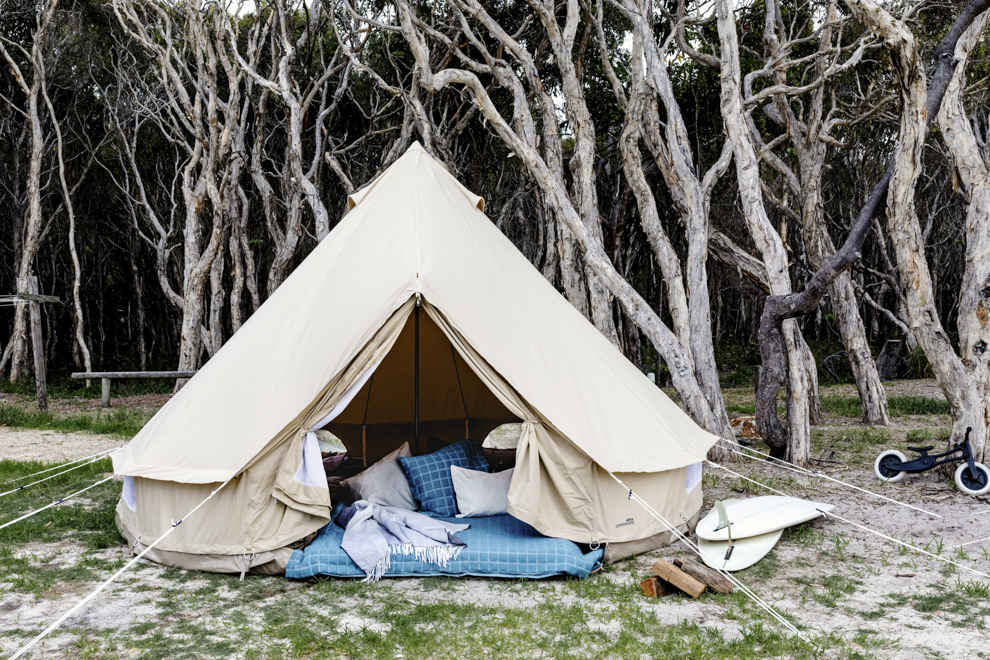
Preventing Mould
If a tent is pitched in a sunny, spot with a light breeze, is well ventilated, windows and doors opened as much as possible with the mesh doors in place and packed away dry mould should not be an issue.
Pitched in a spot where the tent is taking longer to dry out, in humid climates, in shady spots with little sun or where the tent is rained on and the doors left closed afterwards, the perfect conditions for mould can be created.
What is Mould?
Mould is a naturally occurring organism which plays a major role in the earth’s ecosystem. They are the most important part of nature’s ability to recycle. These microscopic fungi exist everywhere except under water, parts of the Arctic and Antarctic, and in artificial environments like clean rooms. Fungi have to depend on other organisms or on the forces of nature to carry them to a food source, or to bring food to them. Mould spores and mould fragments are in the air we breathe.
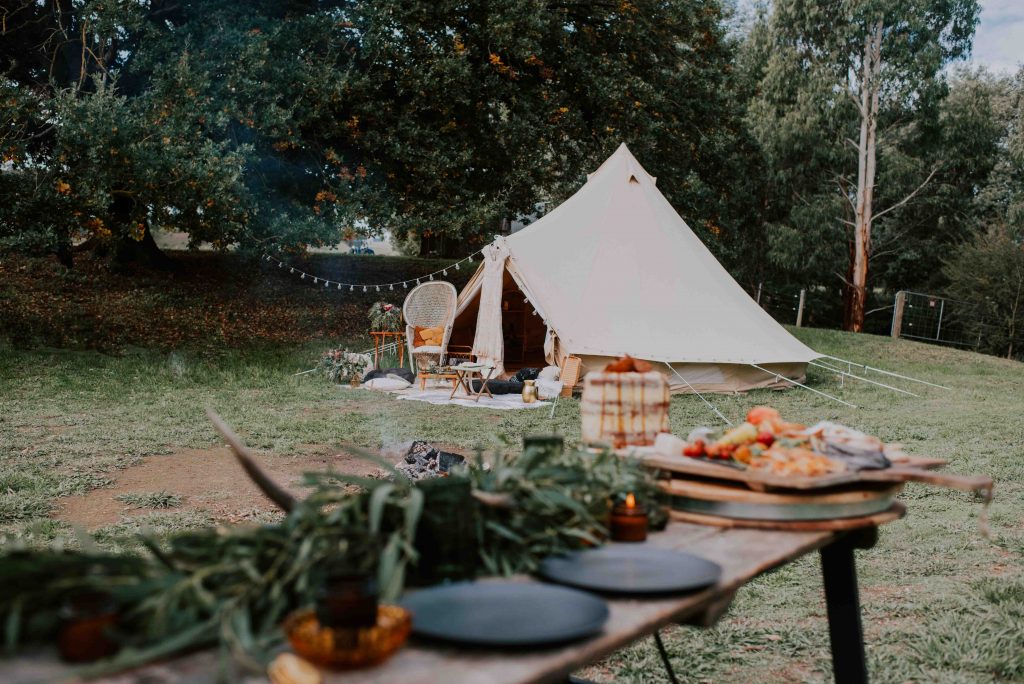
Where does Mold come from?
Mold is everywhere in nature. It clings to clothes, skin, fur, leaves, bugs…you name it, it’s probably got mould on it. Mould can grow just about anywhere that is above freezing. Although mold can grow in a range of environments, it is particularly virulent in damp, dark environments, where there is lots of organic material to feast upon. Think rainforest. Think upcountry Hawaii.
Mould spreads and reproduces by releasing large numbers of spores which can easily spread through air or water and colonize new locations. In the right conditions, mould can grow in as little as 24 hours, which is why it’s important to deal with it immediately as soon as you see evidence of it.
Is Mold Dangerous?
Left unchecked mould can destroy a tent. In mild cases, mould is not pretty and once it gets into the fibre of the canvas it is almost impossible to remove completely, although it is possible to prevent it from spreading. In extreme cases mold causes rot, holes, tears, and can lead to complete loss of a tent.
In regards to your health, it is generally a good idea to avoid living in close proximity to, breathing, or eating large quantities of mold.
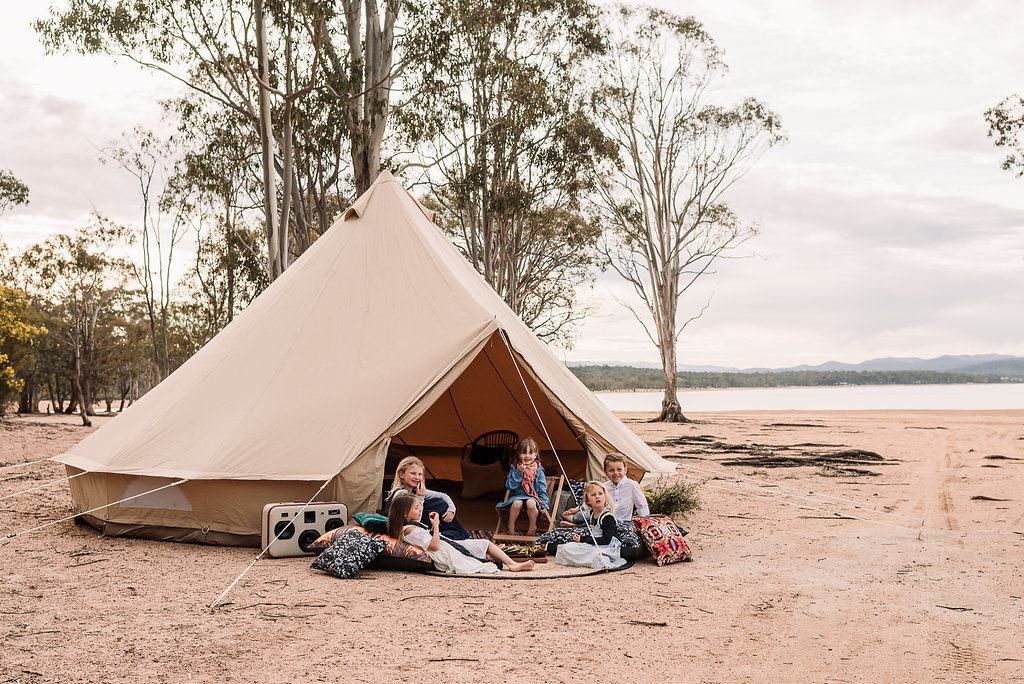
Is my tent mould resistant?
Our tents are made from 100% cotton canvas which has been treated with a water proofing agent which includes an anti mould agent and also helps protect the canvas from UV.
When choosing our treatment we aim to achieve the perfect balance of comfort and durability. The comfort factor is largely influenced by breathability: the heavier the treatment the less the breathability of the canvas which increases internal humidity.
Durability is influenced by the quality and thickness of the canvas, as well as effectiveness of the treatment in combating environmental strain.
In striking that balance we have found a light, environmentally friendly treatment serves the vast majority of the market in a range of environments.
Cleaning and retreating the canvas is an essential part of tent ownership and is dependent on time in use and the conditions in which the tent is pitched.
As a general rule, 20 weeks of continuous use is a good time to treat the tent.
If your tent is pitched continuously in a humid, densely vegetated, or rainy area, you may need to treat the tent after 10 weeks.
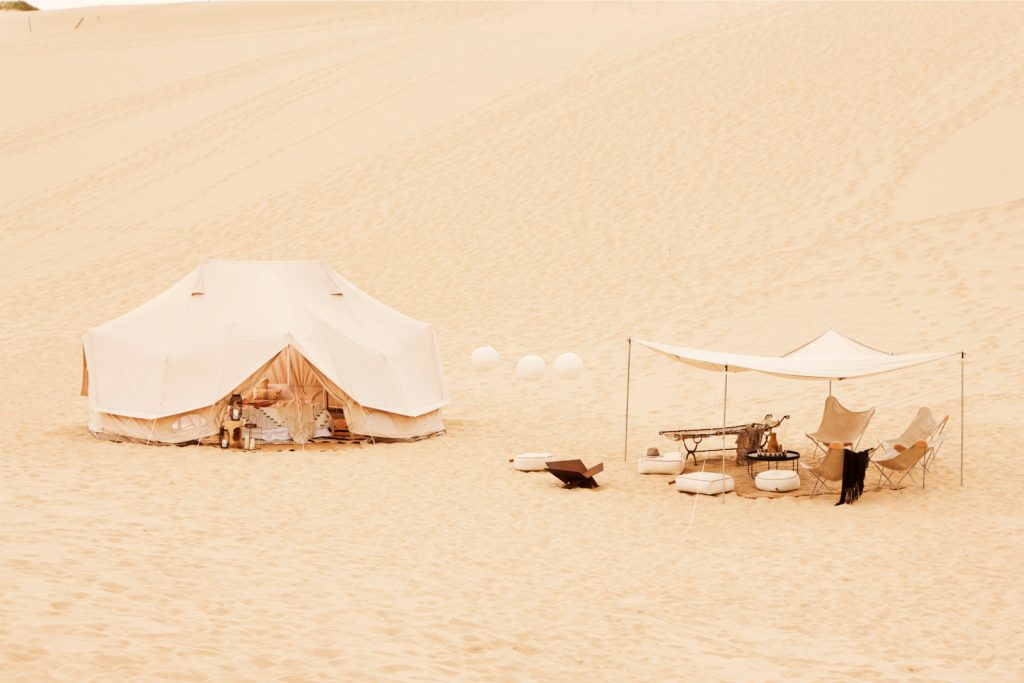
How do I prevent mould?
For the casual camper or ‘glamper’, standard cleaning/re-treatment and ensuring the tent is never packed away damp or dirty will help prevent mold.
Always allow the tent dry completely in the sun, ensuring the floor, guy lines, poles, stakes, and bags are all bone dry before rolling and packing away. If you can’t get everything dry when breaking camp, loosely roll the tent for transport and dry at home in a garage or living room before storing it.
If you’re pitching the tent for a long period of time or living out of your tent, YOU ARE AWESOME!
As a seasoned naturist you know the importance of maintaining a clean camp and quality equipment. Follow these tips to prevent mold from growing in the first place:
- Purchase the Pro or ProTech bell tents which are specifically designed for long term use or extreme environments.
- Regularly inspect the tent for mold growth (a good time to do this is when you retension the guylines)
- Clean off any dead leaves, bugs, bird poop, etc. that falls on the tent
- Cut back vegetation in the surrounding area so tall grass and weeds are several feet away from the canvas. Keep it up as new growth forms. (This also keeps the windows clear and you more comfortable)
- Keep your tent well ventilated. Mesh covered vents, windows, doors, and even walls on the ProTech make it easy to keep it breezy.
- Clean and retreat your canvas as needed, based on your observations of the impact the environment is having on your tent.
Note: Cleaning and retreating your tent will involve taking the tent down from time to time. A typical cleaning and retreatment can require a few hours on a sunny day. If you are living in your tent, be prepared to move your stuff out for a deep cleaning a few times a year.
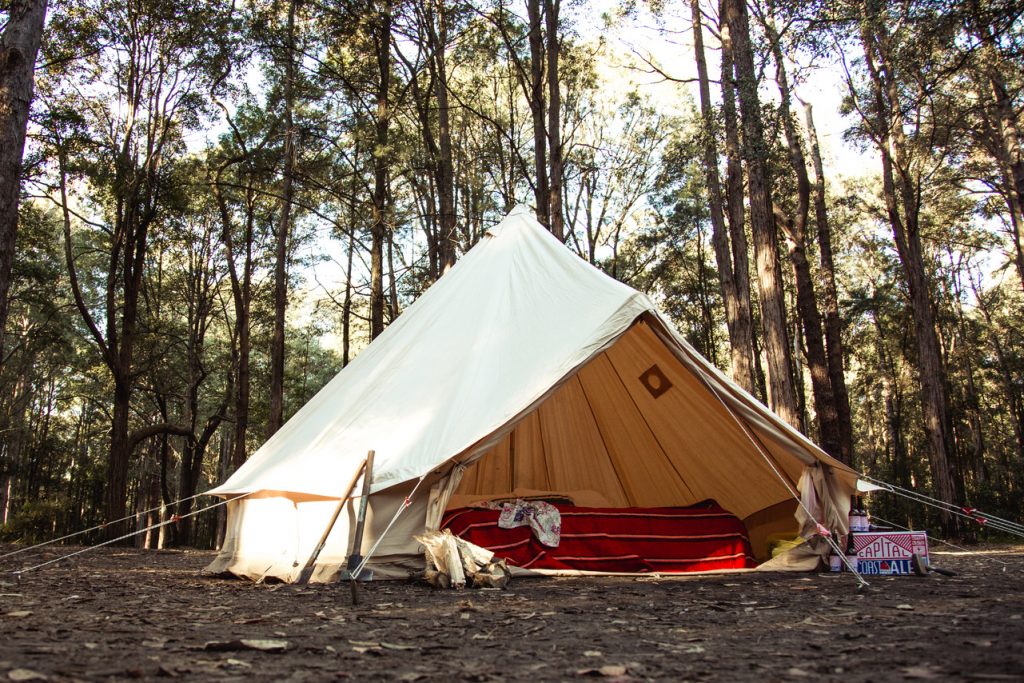
Won’t the sun prevent mold?
Lots of moisture and sunshine provide an excellent environment for plants to grow and dead plants and moisture provide the ideal environment for mold growth. Over millions of years many types of mold have adapted defenses to damaging effects of sunlight. Additionally, UV light degrades the treatment on the tents, exposing the canvas to the elements, making it more susceptible to mold penetration.
Don’t rely on the sun. Keep your tent clean and retreat it as often as needed.
Should I just go with a plastic tent?
Canvas tents do require more maintenance and care than plastic, but are by far more comfortable, sustainable, and durable.
Plastic is non-organic and petroleum based which is less delicious to mold than cotton. This is why plastic doesn’t biodegrade effectively and also why our oceans and landfills are filled with plastic. Nylon and polyester are very difficult to repair and rips and tears are typically fatal. Plastic doesn’t breathe like canvas, which is essential in a humid environment to keep internal humidity at comfortable levels. You can’t use a tent stove in a plastic tent. Plastic tents are still effected by mildew, which stinks, literally.

How to Clean Mold From A Tent
Prevention is key, but mold is everywhere and can happen to anyone.
Identify it: Mold can come in many shapes and colors but generally on canvas it looks like tiny black, blue, or green specks peppered into the canvas.
Kill it: Spray it with distilled white vinegar. Let dry.
Clean it: Scrub it lightly with a soft brush using a mixture of salt, lemon, and hot water. Avoid using detergent soaps or bleach which is harsh on canvas and tough to rinse out. Let dry.
Retreat it: Spray the clean, dry, canvas with a canvas treatment.

Deep Cleaning a Very Dirty Tent
Although mold and mildew prevention is always the best method for maintaining your tent; mold stains do occur, especially in warm, flora and fauna rich environments. If nature has outpaced your tent maintenance routine and you’ve got a very dirty tent on your hands, there is still hope!
First and foremost, keep these things in mind at the outset:
- Set a realistic expectation: mold stains are extremely difficult to remove entirely. The tent will never look brand new again, but with some hard work and patience a good cleaning can add to the life of your tent.
- Deep cleaning is hard work and will take a long time. You may need to repeat a few of these steps depending on how dirty the tent is, or how much soap you have to rinse out.
- Enlist some help! Tents are heavy, wet tents are really heavy.
- If you perfect this process and want to start a bell tent cleaning business in your area; let us know! There is a demand!
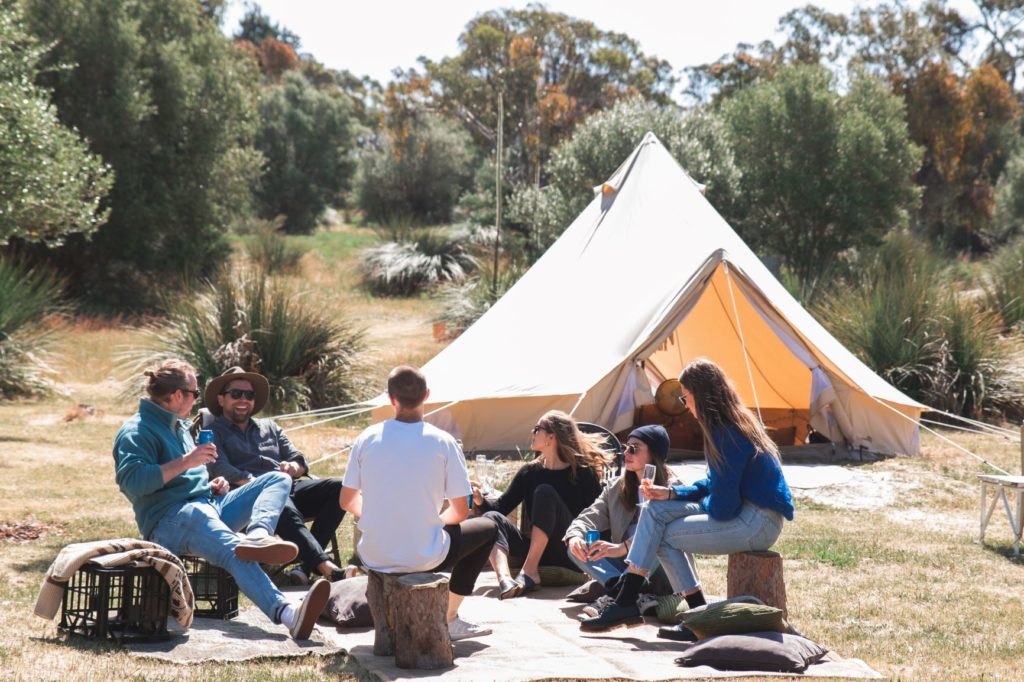
Materials Needed to Deep Clean a Moldy Tent
- A bucket of Oxyclean in powder form, Oxiclean is sodium percarbonate; you can make it yourself but it’s easier to buy the brand name which is generally very affordable.
- A large container that can fit the tent canopy and water with extra room to stir it and manipulate it. (Suggestions: 55 gallon drum, trash can, large storage bin, etc.)
- A sturdy stir stick: boom handle, canoe paddle, de-barked tree branch with smooth ends
- A soft brush or broom
- An abundant water source (hose)
- 2 able bodied workers
- 24-48 hours of favorable weather to complete all the work and allow the tent to dry completely at least twice.
- Floor Cleaning stuff: a mop and some mild soap, whatever you clean your kitchen floor with works.
- Canvas Waterproofing solution to retreat the tent so you don’t have to do this again for a while!
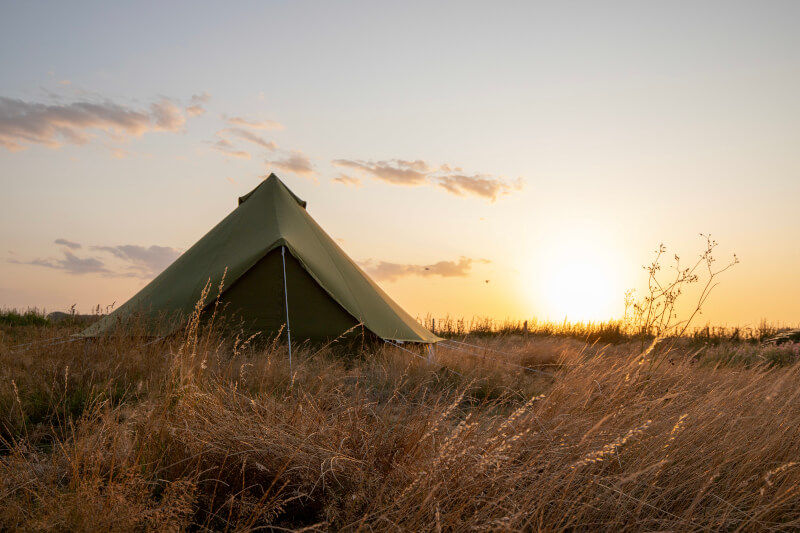
Deep Cleaning Process
- Remove all loose dirt and debris with a soft brush or broom
- Separate the canvas tent canopy from the floor of the tent. You will wash the floor separately. You can leave the guy-lines on if they are dirty, just remember they must also be retreated in the end to prevent UV damage.
- Fill a very large container with about 1 foot (30cm) of warm water. Add several cups of Oxiclean, use your best judgement on how much to use vs. how dirty the tent is and reference the recommendations on the box. Stir thoroughly until the solution is dissolved completely. Warm water dissolves the solution better than cold water.
- Place the tent canvas (not the floor) in the container.
- Fill with water until the tent is submerged.
- Stir and agitate thoroughly so the solution is well mixed and the canvas is soaking evenly.
- Allow the tent to soak for 4-10 hours, stirring occasionally. It’s ok to leave it soaking overnight if you need to.
- You will want a clean surface to place the tent on to dry so have your clean floor ready. You can clean the tent floor just like a kitchen floor. Sweep it, mop it, rinse it.
- When your done soaking, dump out the dirty water leaving the tent inside. Oxiclean shouldn’t kill grass but if your concerned just hose off your grass afterwards, the solution to pollution is dilution.
- With the container on it’s side, do a quick pre-rise rinse and roll to get the dirty residue off see how the tent looks. If you think it needs another round of soaking, fill up the container and add some more oxiclean.
- If the canvas looks reasonably clean, add more water, use your stick to agitate and stir, then dump. Repeat as needed until most of the soap is out of the canvas.
- Spread the canvas out on top of your clean tent floor and pitch it. You can also throw the floor on top of a car, then put the canvas on top of that to assist with run off. Don’t put the canvas directly on your car because Oxiclean can strip clearcoat.
- Hose the tent down again and be sure get any remaining soap off of it.
- Let the tent dry completely.
- Retreat the tent with a canvas specific waterproofing solution of your choice.

Tears and rips
If your tent tears, we’ve a product called Tear Aid for small tears or https://www.belltent.com.au/product/tear-aid-all-purpose-repair-roll-type-a/ for larger tears and similarly if you manage to get a hole in the groundsheet we have https://www.belltent.com.au/product/tear-aid-b-bell-tent-repair-for-tears-and-holes/
If your tent is dirty, for gentle spot cleaning we use On Guard Cleaner Concentrate.
If you are wanting to kill mould at the root, try Concrobium.
or if your tent gets very mouldy, andyou don’t feel like cleaning it yourself, Vacuwash in North Sydney and will clean your tent completely, making it good as new.
If you’ve a particularly large tear then sail makers and shade sail makers can generally help.
Questions
If you have any questions about bell tent maintenance please don’t hesitate to contact Breathe Bell Tents.








